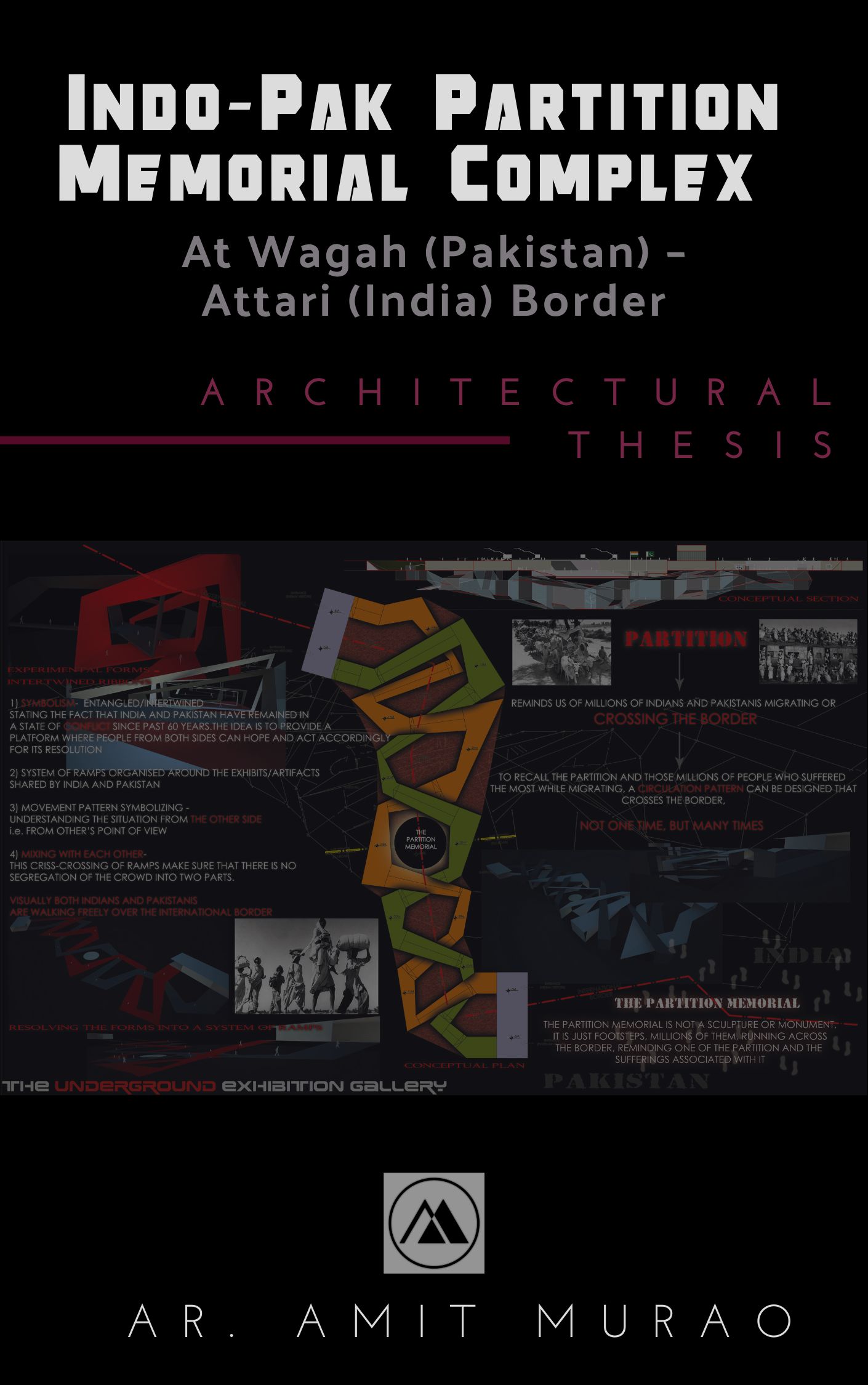After much deliberation, I have finally published my Architectural Thesis "Indo‐Pak Partition Memorial Complex, At Wagah (Pakistan) – Attari (India) Border: A hypothetical architectural thesis for Partition Memorial Complex - A Cross Border Platform for Communication" on Amazon - Kindle. It is available both as an e-book and as a Paperback copy across most countries.
Introduction of the Book
- The book begins with an idea about the Peace Museums. Thereafter it introduces the project i.e. Indo-Pak Partition Memorial Complex, and its purpose.
- The Second chapter i.e. Reading of the Programme, introduces the existing functions at site and then discusses the hypothetical programme developed by the author. Following the hypothetical architectural programme is the relationship diagram of activities on site. The chapter ends with the inferences and conclusions.
- The third chapter i.e. Reading of the Site , introduces the site as a space shared by India and Pakistan. Next is the site location maps which show the site at various scales. Following the site location maps, is a photojourney to the site with site activities and site panorama. The site context demarcation plan comes subsequently. The chapter ends with inferences and conclusions.
- The fourth chapter i.e. Research, begins with discussing the Core Issues of Research. The following issues have been taken up for the research,
i.Narrative Architecture
ii.Deconstructivist Architecture
iii.Emotive Architectural Expression – Visual Study
Next is a brief study on museum typology followed by case studies on
i.Jewish Museum, Berlin
ii.Imperial War Museum, England
iii.The Historical Museum, Japan
iv.Falkestrasse-Rooftop Modeling, Vienna
- The fifth chapter i.e. Summing Up discusses the challenges, constraints and opportunities in this project. The subsequent section in this chapter is on the Next Step(s) in the designing process.
Introduction
The Partition is one of the deepest wounds in India. It was the creation of boundaries between regions that culturally flowed into each other. Migration of a stunning, displacement of masses and the cruel and ruthless bloodshed of innumerable citizens are the circumstances that constitute this great human tragedy. The tragedies associated with The Partition are suffered by both nations (some may argue that it was for common good), but no one can challenge the tragedy suffered by those 12 million people who migrated during the partition and millions who lost their lives, families, homes, and properties. And what is really strange is that there is not a single Partition Memorial in India or Pakistan.
Partition was something that was shared together by India and Pakistan, therefore The Partition becomes the genesis of this project. The proposal of a Joint Partition Memorial is an extension to the existing Ceremonial Parade which happens every evening throughout the year at the Wagah-Attari Border, which is a Joint Check Post. Thousands of people come from India and Pakistan to see this parade performed by Indian and Pakistani soldiers, which lasts for approximately 25 minutes. This proposal provides an opportunity for visitors to spend more time at the complex.
Observing the complicated relationship between India and Pakistan,
If we HOPE ---> For PEACE ---> Then it is only possible through COMMUNICATION
The purpose of this sort of institution is to create a PLATFORM for COMMUNICATION between the citizens of India and Pakistan. The idea is to ‘Know and Understand’ each other through communicative activities. Apart from the communication, this project aims at creating SHARED SPACES across the Border and exploring the medium of architecture to make an IMPACT.
Summarizing the purpose of this proposal,
‘Taking the remembrance of Partition in focus,
this complex creates a Platform for Communication,
which Hopes for a Peaceful future’
Challenges/Constraints/Opportunities
The biggest challenge with this Thesis Project is to bring people of two nations together, two nations that have predominantly remained in a state of conflict for the past 60 years. Another challenge is to create a transition from the Calm and Quiet setting of the landscape to a very Complex space situated at the underground level.
A major constraint here is that Indians and Pakistanis are apparently mixing with each other, but physically they are never in contact.
There is a great opportunity for the people of India and Pakistan to understand and communicate with each other through various mediums, with the Partition Memorial Complex as their platform. This institution could become a monument of learning, forgiving, and loving. The project is aiming to create Hope for Peace.

